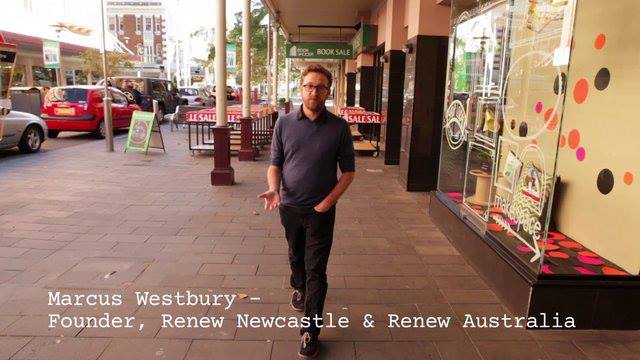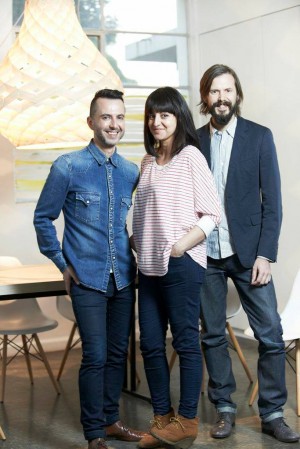A quieter week this week and one filled to the brim with creativity – little bit of my own and a great slab from many others.
Interesting meet and greet with a number of the leaders of Victorian art organisations during the last week – great opportunity for me to meet people I had heard of but not met before, and to get to understand and share the challenges facing all our organisations. A great initiative from Esther Anatolitis, and one that I hope might be repeated semi regularly.
I spent a good amount of time over the week thinking about communities – what makes them strong? Why do they sometimes fail? Why do we spend so much time exploring dependency and vulnerability without better understanding the positive factors that create and sustain resilience, and, and maybe more importantly, the negative actions that are speed humps or road blocks on the journey to resilience.
I keep being drawn back to the idea that the resilient communities that I have got to know, have some sort of rhythm to them – a heartbeat – a wave of activity that carries them forward and seems to sustain them through the hard times. Need to work to understand this better – probably sounds like pop psycho babble at the moment!
Three quite diverse but ultimately related posts excited me on Sunday. Big ideas for local places, crowd-funding, maker-culture, co-working and the healing power of music. Wow!
Marcus Westbury – ‘Creating Cities’
Marcus Westbury would and should deservedly be well known to many readers as the power behind Renew Newcastle and Renew Australia.
Marcus has decided the time is right to take all that currently resides in his head and no doubt on scraps of paper, in presentations and wherever else, and turn it into a book to be titled ‘Creating Cities’. He describes Creating Cities quite neatly as a small book about big ideas for local places.
He argues that:
‘… technology, creativity and the initiative of local communities themselves are profoundly changing the possibilities of local places. We are in the middle of a profound transformation. Creativity is decentralising and proliferating while traditional retail and the places that once accommodated it are in a spiral of decline. Local communities are making more and buying less and this has profound implications for the cities that we build and the communities that we live in’.
Marcus launched a campaign on Sunday morning on Pozible – details here, to raise the $10,000 funding he estimates is the minimum necessary to produce the book.
I think this is the book that we have needed for some time now. I hope we can all get behind this project and create a comprehensive resource and information source for this important work.
Update at the time of writing this blog – 1.30 pm on Monday – pledges totalling $13,961.00 had been made – the $10K target was reached in less than 24 hours, and Pozible has advised Marcus that Creating Cities set a new record for the most individual contributors in the first 24 hours of ANY project they’ve done!
But don’t stop giving now – keep on sharing this project with your networks – the more $’s, the better the quality of the book – and the more useful it will be – keep it happening people!
Link to the video on the project here.
Q&A from A City With Quirk
A City With Quirk has very rapidly become a favourite blog and newsletter for me and many equally curious minded on what makes Melbourne so special – Aliki Komps the ACWQ’s curator, aims to showcase and provide oxygen to all the quirky things that Melbourne is. While the ACWQ website is being given some fresh love and attention and a new coat of paint, she has quietly started a series of themed Q&A’s with interesting Melbourne people who are trying to shake the old city up a little.
The latest is a great chat on creative co-working spaces with Nikos Psaltopoulos, founder of themanroom, who shares his ideas, passion and knowledge in the space of collaborative workings.
Working alone running your own business – particularly in the creative world certainly has it’s advantages, but I love the opportunity to bounce ideas around with my painter wife and would find it really difficult and isolating if she were not reasonably close by in her studio. We don’t live in each other’s pocket, and we do respect each other’s space, but there is no doubt that we each contribute to the other’s creative practice – of course honesty and each of us having the courage to be honest with the other, are both pretty important here!
I would really really miss the input of other like-minded people, and the opportunity to bounce ideas around with other people – even now, when I am playing with the other side of my brain, I occasionally miss the opportunity to discuss a technical idea with someone else working in the same area.
Have to say I am really excited at the idea of creative co-working spaces, and when our next move occurs, being involved in one will probably make a lot of sense – either by necessity or choice or both!
Really loved the interview with Nikos, and love his attitude and what he is doing for creative Melbourne – oh and his design skills are pretty special too!
Strongly recommend it as a must read!
Click here for the interview.
The Healing Power of Music – nsfconsulting
Natalie Fisher of nsfconsulting has written a very personal, thoughtful and moving blog on the healing power of music.
Natalie has many years of experience in a number of sectors including social research, the media and landscape planning. Her company has researched and evaluated disaster recovery initiatives, human services programs, arts and cultural initiatives, exhibitions, and environmental sustainability programs. In recent years they have started to build a solid evidence-based body of work that demonstrates the important role that arts can play as part of the disaster recovery process. They have evaluated arts-based initiatives that have been rolled out throughout Australia in response to bush-fires, floods and cyclones.
Linking with the other two articles here, they are also starting to build a body of work that explores the influence of arts-based programs on the growth and development of regional Australia.
Natalie is a chorister with Sydney Philharmonia Choirs, and over the weekend, sang in a memorial concert for a long term chorister and friend who recently died after a six year illness.
She describes her very personal experience in this blog post. You can read the blog, here.
I am very passionate in arguing for the amazing role art and creative practice can play in helping individuals and communities deal with trauma, and have discussed this with Natalie a number of times. It really is a privilege to share her story.
From my experience, I believe it is not the watching nor the listening that makes the difference – it is the doing, the creating, the being part of making something, that works the magic.
While music will have some effect on the listener, in a therapeutic sense, it has most effect on those taking part in its creation.
I capture images, and, using wood and metal and found objects, I try to create form in 3 dimensions – yet what I create will never move as music can move. It seems to me that music, of all the arts, pulls the strings of our emotions the most sharply and intensely!
Thanks for sharing your experience Natalie.
So three great yarns – establishing creative co-working spaces, crowd-funding to produce a book of learnings and a resource about the use of maker communities to renew cities and a case study on the power of art – in this case music – to heal. All linked but all quite distinct.
Tomorrow, I have been invited to visit the Creative Therapy Service at Royal Talbot Rehabilitation Centre learn more about their Music, Art and Horticulture Therapy programs. Link is here.
I also have to catch up with the wonderful people at The Dax Centre – who promote mental health and well-being by fostering a greater understanding of the mind, mental illness and trauma through art and creativity. I have a longstanding, but currently unfulfilled, invitation to visit, and now that I finally seem to be getting myself organised, it is time I accepted – providing of course it is still open!!
More on Creative Therapy at Royal Talbot next time.
In the meantime, be creative and enjoy everything that is fun and entertaining and quirky about Melbourne and Victoria.
b


Loving your blog posts Bruce – keep them coming!
Thanks Chris – you will notice that, following your advice I can now do wrap around text!
The Creative Cities story brought to mind some of the ideas my colleagues and I started discussing back when I was working in the community disability sector around the time deinstitutionalisation was happening and how the community might come to value people with sever and multiple disabilities. We wanted to challenge the notion of valuing people simply for their “economic productivity”. To encourage valuing people for their ‘cultural productivity’ – thinking about the ways our lives and communities are enriched through our interactions, creative contributions or simply living side by side. To me replacing commerce with creative endeavours is another example of that. There is more than one way to contribute and enrich lives – there is more than one way to build and enrich a community.
Agree Sal – we need to value people – and art – for their (its) intrinsic worth – not just productivity. I hope that the work of people like Marcus, blogs like A City With Quirk, and research from people like Nat Fisher will play an increasing role in convincing governments and communities that there is a better, more connected way. A way that won’t exacerbate disadvantage or leave some people behind, but rather, will lead to inclusion and break down some of the barriers that exist now.
Thanks for your comments!